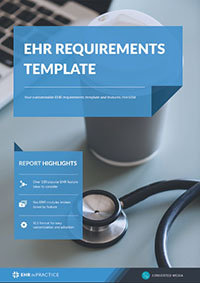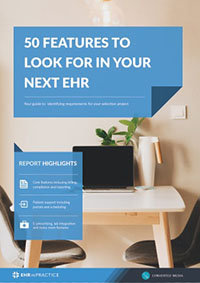What to look for in a dentistry EHR
The dentistry-specific EHR market presents an interesting case study due to the fact that EHR adoption rates among dental providers is comparatively low when compared to other areas of healthcare. The lagging adoption rate among dental practices can be attributed to the relative underdevelopment of the dental EHR market when compared to the other specialty EHR markets.
This point is underscored by online dentistry resource Dentistry IQ, which points out that the underdevelopment of the dentistry EHR market has resulted in a situation in which “there are very few options available for certified dental EHRs that offer modules and applications appropriate for dentists.” Given these market conditions, what should dentistry practices look for in an EHR?
Decision support applications
Decision support applications provide the ability to capture, store, display, and analyze digital images and suggest proposed treatment options. Decision support applications are used across a number of healthcare settings; however, dentistry practices can benefit from dentistry-specific decision support applications that use a ‘mapping system’ which use common diagnostic codes when analyzing an x-ray image to generate an evidence-based treatment option.
Recommended reading: find dentistry-specific EHR using our EHR vendor directory, updated monthly
Interoperability
Interoperability describes an EHR’s ability to exchange information between other EHRs or two or more components to exchange information and to use the information. Interoperability is not a functionality specific to dentistry - it is a functionality that applies to all EHRs. Yet dentistry practices who wish to receive Meaningful Use incentive payments and those who use components in their practice that would require data sharing should strongly consider interoperability as a foundation to their EHR’s functionality.
Treatment planning
Treatment planning for dental patients is essential in the context of supporting transitions of care, care coordination, population health and quality improvement. Treatment planning functionality in the context of a dentistry EHR can be generated based on a number of data collected by the EHR such as sugar intake, inadequate exposure to fluoride, recent restorations for caries and frequency of treatment.
E-prescribing
E-prescribing offers a number of practical benefits to a practice in that the that amount of time needed to prescribe medication to a patient, adjust dosages or order a refill can be reduced through an e-prescribing module incorporated into an EHR. Not only do e-prescribing capabilities streamline workflows - they can also enhance the quality of care, by reducing the risk of medical errors and assisting in the coordination of care across settings.
One particular benefit which dentistry practices can gain from an e-prescribing module is that they can alert providers of the risks of prescribing a particular drug to a dental patient. Although the majority of adverse drug events occur in an inpatient setting, it is important to note that 7% of adverse drug events occur in an ambulatory setting such as dental practices. This risk is particularly intensified in dentistry whose two main prescribed drugs- antibiotics and painkillers - carry a high risk of adverse drug events occurring.
Although the dentistry EHR market lacks the range of choice found in other EHR markets, the narrow range of dentistry specific EHR features listed above can offer significant benefits to dentists who are thinking of adopting an EHR.
Free white paper

EHR Vendor Directory
Get the most up-to-date directory of EHR software vendors. Find the best software for your practice.

Featured white papers
Related articles
-

EHR requirements and key features: your complete guide
Our extended guide to EHR requirements - everything you need to know and more on the subject
-

5 key stakeholders in your EHR selection
Learn about the individuals that, when consulted early and often, can make your EHR selection pro...
-

5 important areas of EHR training during implementation
Successful EHR implementation is not possible without crucial EHR training




